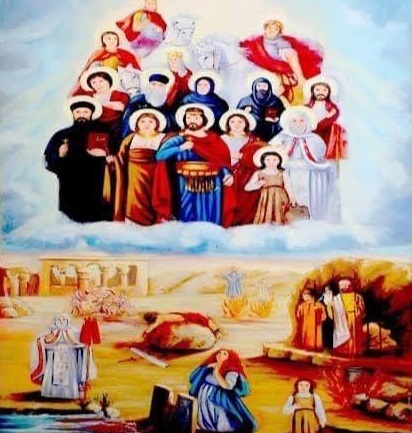
"Unless a grain of wheat falls into the ground and dies, it remains alone; but if it dies, it produces much grain."
(John 12:24)

They marveled saying, "No one can do this miracle except the true God alone, Who is the Creator of nature from nonexistent." They cried with one accord, "We believe in the God of St. Paul."